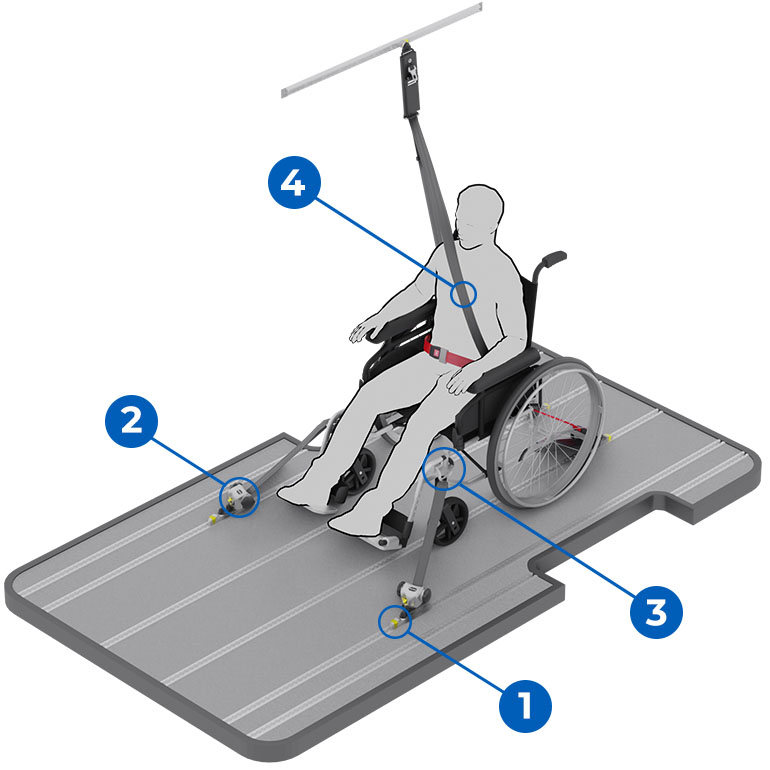
A brief introduction to WTORS
Wheelchair tie-down and occupant restraint system
A wheelchair is secured by using four tie-downs. Two in the front and two in the back. These can be webbing straps or retractors. For the front tie-downs, you also have the option of electric reels.
Each tie-down (2) is then attached to the wheelchair using wheelchair fixing (3), either a strap with tongue and buckle, a hook or a karabiner.
Each tie-down (2) is also attached to the vehicle floor using a floor fitting (1), either via a solo anchor, in a rail or directly bolted to the floor.
The occupant belt (4) consists of a shoulder belt and a lap belt. The occupant belt can share the floor fitting with one of the rear tie-downs or have its own. A shoulder belt does, however, require the attachment of the upper anchorage (or 3rd point) in the vehicle, this is usually in the form of a piece of rail known as a cant rail.
Step 1: Floor attachment
How to attach restraints to the vehicle floor.
Step 2: Type of tie-down
Choose the type of tie-down.
Step 3: Wheelchair attachment
How to attach the tie-down to the wheelchair.
Step 4: Occupant belt
How to secure the passenger.